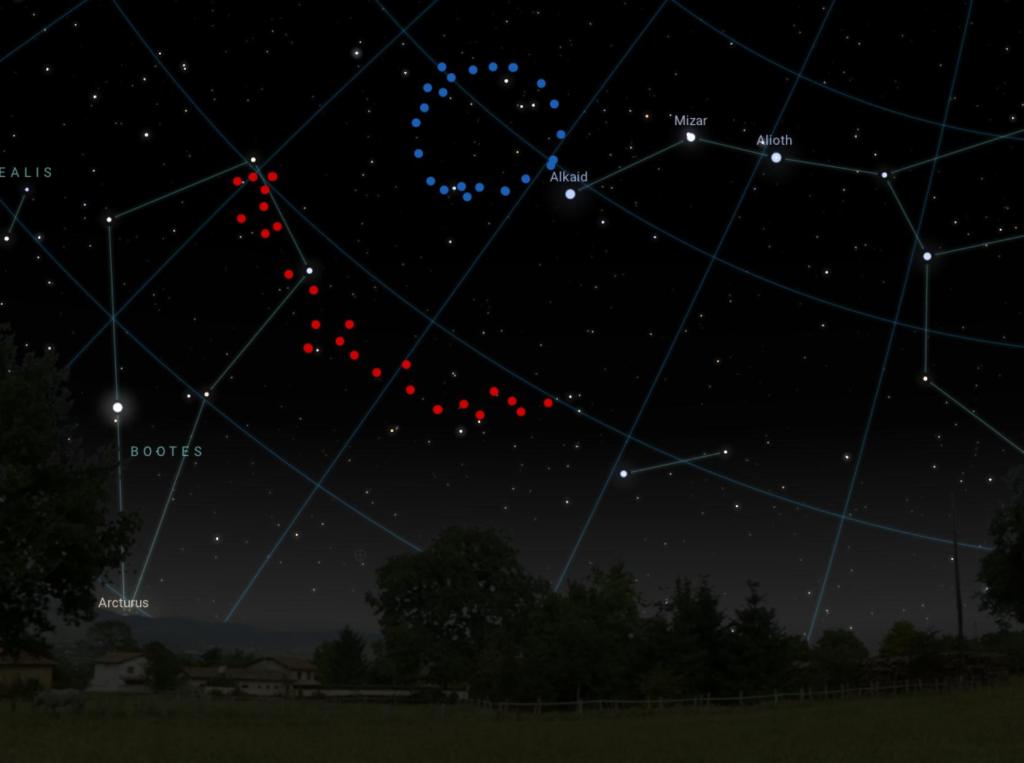The universe is more connected than you might think: In recent years, scientists have used new tools and techniques to map the “cosmic web,” which is made up of intertwined strands of gas structures known as filaments that link galaxies. Now, a team of researchers have identified a new “large-scale structure” in the universe that they call the “Cosmic Vine.”
The researchers hail from numerous universities and institutions across Denmark, Chile, the U.K., and the Netherlands. They published a preprint of their work to the arXiv server on November 8. According to the study, the Cosmic Vine was spotted after poring over data collected by the James Webb Space Telescope (JWST), humanity’s most powerful tool for peering into the far reaches of space and time.
Videos by VICE
According to the researchers, it is a massive “vine-like structure” that encompasses 20 galaxies and stretches for over 13 million light years. It’s also very ancient: The researchers pegged it at redshift 3.44, meaning it’s situated in the early universe. Redshift refers to the way light stretches as it travels longer distances through time, with higher redshifts indicating an object is older. A redshift of 3.44 would mean light from the Cosmic Vine has been traveling for between 11 and 12 billion years before reaching JWST. The universe is roughly 13 billion years old.
The discovery is notable because it can teach us more about how galaxies form. Indeed, recent work on the cosmic web has revealed that filament structures are crucial for delivering the materials galaxies need to grow—a previously-discovered filament was referred to as a “pipeline” for fueling this type of growth by researchers. The researchers who identified the Cosmic Vine wrote that galaxy clusters are the “most massive gravitationally-bound structures in the universe” and that studying their progenitors “in the early Universe is fundamental for our understanding of galaxy formation and evolution.” So, characterizing the dynamics of the Cosmic Vine and the galaxies embedded within it could teach us a lot.
However, the Cosmic Vine raises more questions than it answers. The researchers note that our snapshot of the Vine indicates it’s still in its growing phase, and yet it contains two massive galaxies that are quiescent, meaning they’ve stopped forming stars. These quiescent galaxies are not in the core of the developing cluster, which some theories have held is a requirement for star formation to be halted. “This discrepancy potentially poses a challenge to the models of massive cluster galaxy formation,” the authors wrote. “Future studies comparing a large sample with dedicated cluster simulations are required to solve the problem.”
“What is the culprit quenching their star-formations at so early cosmic time?” the authors ask. Observed features of the galaxies indicate that the culprit could be a starburst triggered by merging galaxies—this is when star formation occurs at a rapid rate that quickly depletes available resources. Another explanation may be due to feedback from a supermassive black hole embedded in one of the galaxies, known as an Active Galactic Nucleus, or AGN.
Until more work is done, though, we simply don’t know the answer. As our knowledge grows, so do the universe’s many mysteries.





